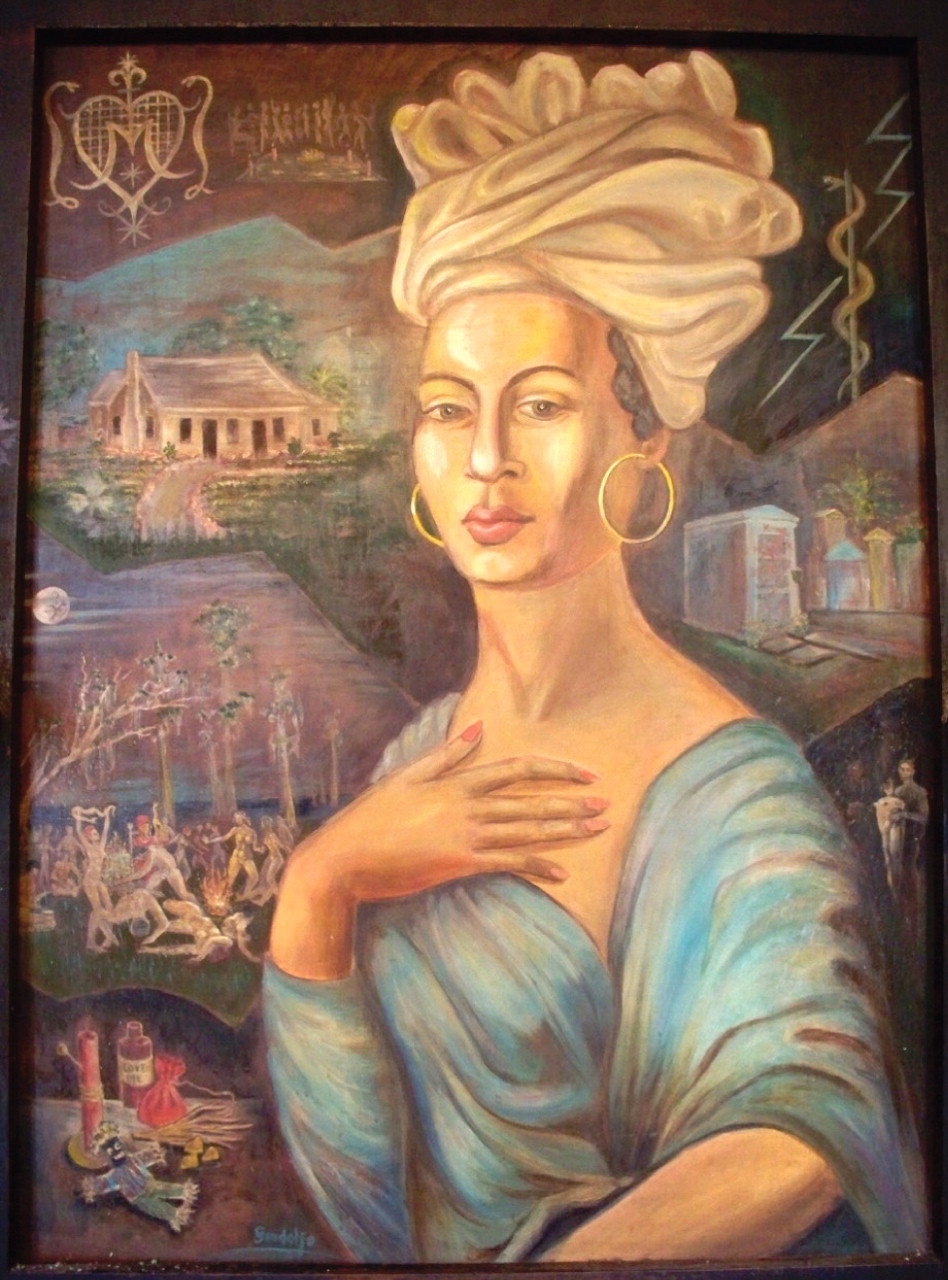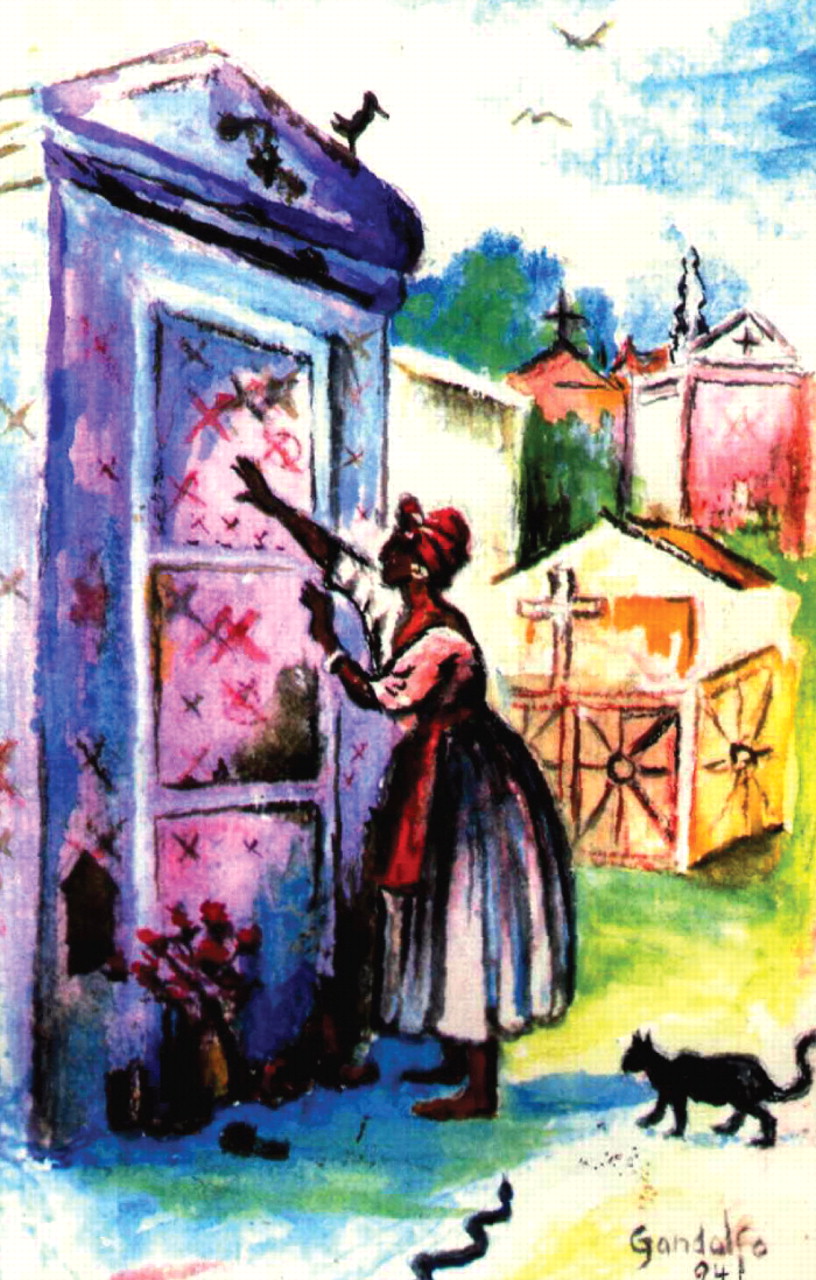Voodoo Adherents Invite Visitors Into Their World
Abstract
New Orleans holds a particular fascination for people who are interested in spiritual beliefs and the paranormal. Indeed, New Orleans is supposed to have more than its share of spirits and hauntings. But still something else gives New Orleans an edge over other American cities as far entry to “the other side” is concerned. It is a belief in, and a practice of, voodoo.
“Voodoo” means “spirit” or “mystery.” It was brought to New Orleans during the early 18th century by slaves who came from what is now Benin in West Africa. Voodoo adherents believe in the existence of one god, below which powerful spirits operate and exert influence on daily life events concerning family, love, money, happiness, and revenge.

This oil painting of New Orleans' 19th-century voodoo queen Marie Laveau is based on historical descriptions of her. The painting was done by Charles Gandolfo, a professional artist who founded the New Orleans Historic Voodoo Museum in 1972.
During the 19th century, voodoo queens became central figures in New Orleans. The most revered was Marie Laveau. She acted as an oracle, conducted rituals, performed exorcisms, and offered sacrifices to spirits from behind her cottage on St. Anne Street in the French Quarter.
How many New Orleans residents still believe in and practice voodoo is unknown. But the major focus of New Orleans voodoo practice today seems to be on serving others and favorably influencing life events by connecting with spirits or ancestors. Methods used to do so include readings, spiritual baths, special diets, prayer, and personal ceremonies.
The practice of voodoo is a major tourist attraction in New Orleans. There are shops selling voodoo candles, charms, dolls, oils, and powders. The New Orleans Historic Voodoo Museum, located in the French Quarter for 38 years, gives visitors a lot of fascinating information about voodoo, as well as a feel for it.

A watercolor illustration of Marie Laveau's tomb in St. Louis Cemetery No. 1.
The museum traces New Orleans voodoo back to ancient Africa, where the 7,000-year-old religion began, and describes its Native-American, European, and Haitian influences. In the museum visitors can hear the sounds of voodoo's ritual drumming and chanting and view historic voodoo artifacts, some belonging to Laveau. There is an altar that presents skulls and bones to ancestors and asks for their guidance and protection. The museum also offers visitors a walking tour to St. Louis Cemetery No. 1, where Laveau is buried, as well as private ritual services such as psychic readings, voodoo weddings, special blessings, or hex removals.
Voodoo should especially captivate visitors to APA's annual meeting because of its possible influence on people's mental and physical health.
During the early 20th century, for example, Harvard neurologist Walter Cannon, M.D., made some seminal discoveries about human physiology. For instance, he originated the concept of the “fight or flight” response. But Cannon also collected anecdotes from around the world about people who had died after being “cursed.” He published these findings in a 1942 paper titled “Voodoo Death.” And in this paper he put forth the hypothesis “that 'voodoo' death may be real, and that it may be explained as due to shocking emotional stress—to obvious or repressed terror.”
Then in the June 2005 Psychosomatic Medicine, Richard Lane, M.D., Ph.D., a professor of psychiatry at the University of Arizona, and colleagues reported study findings that supported Cannon's hypothesis. Lane's study included 25 survivors of cardiac arrest who showed no evidence of coronary heart disease. The study also included a comparison group of 25 heart attack survivors with documented coronary heart disease. Subjects were interviewed to learn how much emotional stress they had experienced during the 24 hours preceding their cardiac arrest or heart attack. Results for the cardiac arrest and heart attack groups were compared. Significantly more of the cardiac arrest group than the heart attack group had experienced moderate or severe emotional stress during the period evaluated, suggesting that strong emotions in the absence of underlying coronary heart disease—say, fear induced by a voodoo curse—might be able to stop the heart and cause death.
Indeed, “in Walter Cannon's famous study of 'voodoo death,' sudden death occurred within 24 to 48 hours of a curse being inflicted,” Lane and his colleagues noted in their paper. “[Yet] autopsies were not performed to determine whether those victims had preexisting heart disease. [But] in the current study... structural heart disease that could cause sudden death was absent ... [yet cardiac arrest still occurred].”
Many people dismiss voodoo as a cult or superstition. Others, however, truly believe in its powers. So why don't you visit the New Orleans Historic Voodoo Museum and draw your own conclusions?
The Historic Voodoo Museum is located at 724 Dumaine Street. Its phone number is (504) 680-0128. More information is posted at <www.voodoomuseum.com>.



